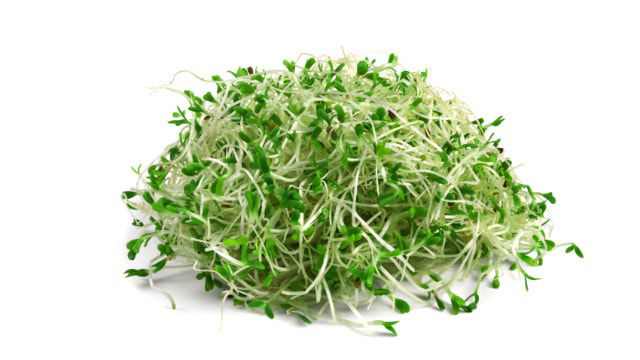|
Broccoli is synonymous with health. A large, growing body of evidence indicates that cruciferous vegetables, such as broccoli, have phenomenal health-promoting properties. To receive these health properties, it is recommended to consume broccoli on a regular basis. At a minimum, include 1-2 cups of cruciferous vegetables as part of your diet 2-3 times per week. Even better from a health standpoint, it is recommended to consume 2 cups of cruciferous vegetables 4-5 times per week. Broccoli is a member of the cruciferous (Brassica) family of vegetables that also includes cauliflower, kale, collard greens, cabbage, mustard greens, bok choy, turnip greens, Brussels sprouts, and many more. Nutrients and Health Benefits Health-Promoting Benefits
Selecting Broccoli For best taste, select the freshest broccoli and search for tightly closed floret clusters. Avoid broccoli with florets that are not compact or uniformly colored. They should not be yellow, bruised, or have yellow blossoms; these are indications that they are overly mature. Dark green Broccoli contains more chlorophyll, beta-carotene, and vitamin C, while purple-hued heads of broccoli contain higher concentrations of flavonoids. Search for firm stalks and stems and attached vibrant leaves. Do not purchase broccoli with stalks that are too wide, woody or hollow. As with all vegetables, it is recommended to select organically grown broccoli when possible. Storing Broccoli It is encouraged to consume broccoli as soon as possible after purchasing it for the most flavor and nutritional benefits. The longer it it stored, the more nutrients that are lost. It is not recommended to store broccoli for more than 7 days. Broccoli continues to respire (break down sugars and release carbon dioxide) even after being harvested. Reducing the storage temperature reduces the respiration rate. Preparing Broccoli Before cutting broccoli, rinse under cold running water. To minimize potential loss of nutrients, do not soak broccoli or the water-soluble nutrients will leach into the water. Never cut broccoli before washing. Upon cutting broccoli stems as close to the florets as possible, let them sit 5-10 minutes before cooking to bring out more flavor. The stems and leaves can either be enjoyed or saved for soup broth. Cooking Broccoli To maximize the nutritional benefits, broccoli should be cooked just long enough to soften its fibers. Researchers have well established that improper cooking, too much heat and long cooking times, can easily damage many nutrients present in broccoli. The most nutritious way to cook broccoli is a quick-steam at roughly 212 F for only 4 minutes. Use exact cooking times, and avoid using high heat to get water to a rapid boil and full steam. The stems will be required to cook 2 minutes longer due to fibrous structure. Vegetables, such as broccoli, can continue to cook if they are left in the pot after the heat is turned off. Therefore it is suggested to immediately remove broccoli from the pot to prevent overcooking. ReferencesMateljan, G. (2017). Broccoli. [online] Whfoods.com. Available at: http://www.whfoods.com/genpage.php?tname=foodspice&dbid=9 [Accessed 9 Oct. 2017].
Mercola.com. (2017). What Is Broccoli Good For? - Mercola.com. [online] Available at: http://foodfacts.mercola.com/broccoli.html [Accessed 9 Oct. 2017].
0 Comments
Benefits of Broccoli Sprouts Broccoli sprouts, a cruciferous vegetable, have recently become popular after researchers discovered that they abundant in sulforaphane, a phytochemical with tremendous health benefits. Researchers have observed that sulforaphane:
Items Required
Instructions
|
This portal contains research, news, information, observations, and ideas at the level of self in an effort to address lifestyle applications.
Archives
June 2024
Categories
All
|




 RSS Feed
RSS Feed

